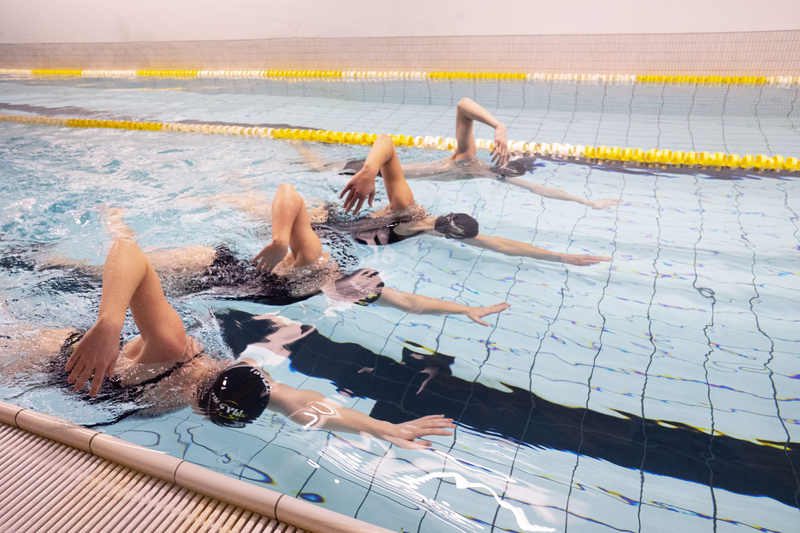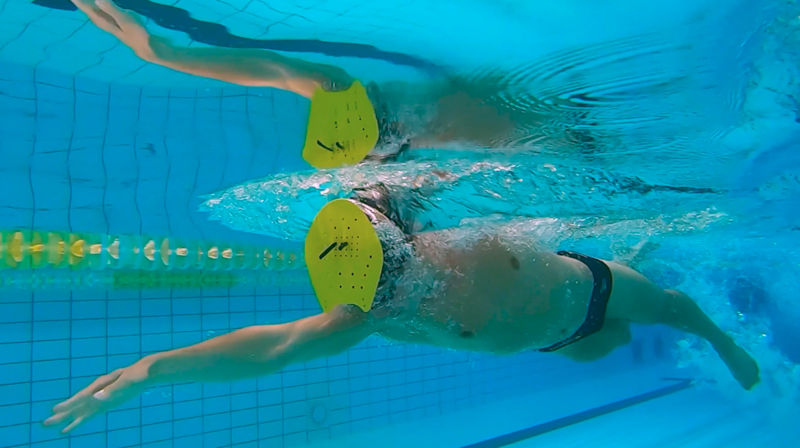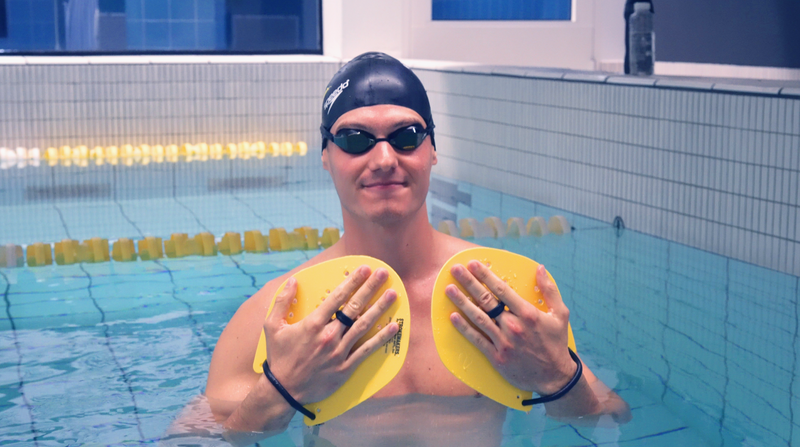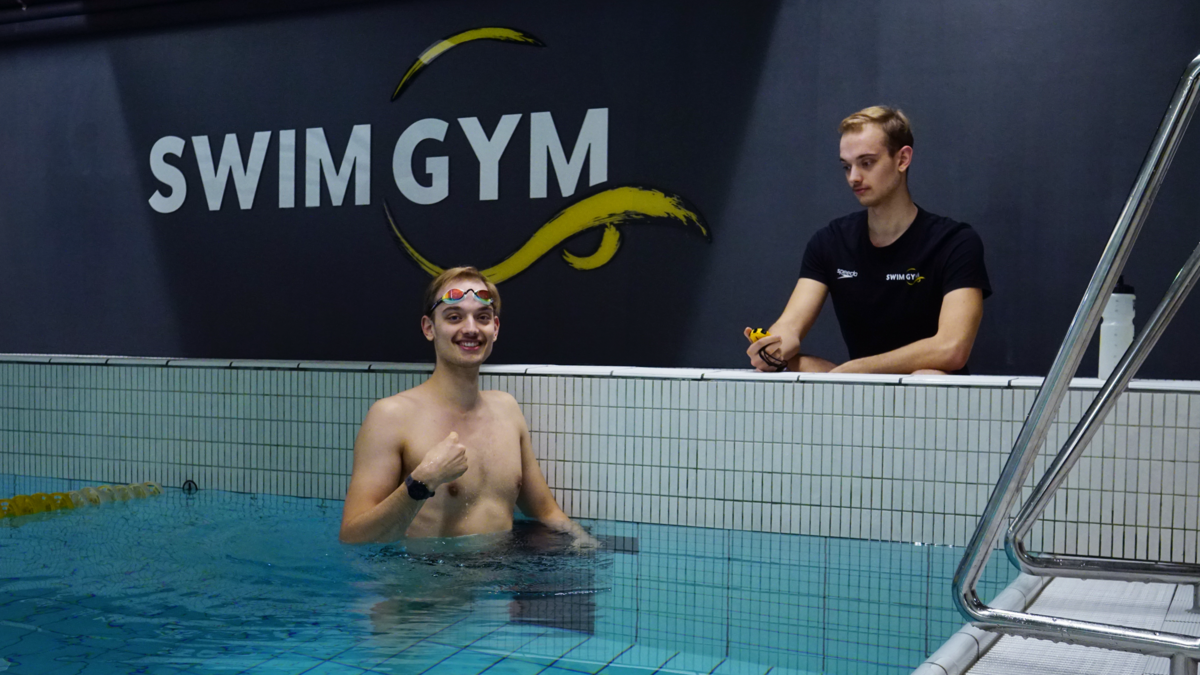Swimming blog - TRAINING How to coach yourself while swimming?
When you’re not training with a swim coach, it is quite challenging to maintain or improve your technique. When swimming by yourself you’re not able to analyse or get feedback on your stroke. However, there a few ‘hacks' and exercises that will tell you if you're swimming with the right technique or not. So whenever you don’t have a swim coach available on pool deck, you can still coach yourself and improve your swimming technique. How? We will tell you.
.jpg)
Measuring Efficiency
A coach often provides you with feedback on the efficiency of your stroke. However efficiency can easily be measured by yourself. Being very efficient means using less energy while swimming. Simply said, efficiency is measured by stroke length, which is the distance the body travels per stroke you make. And a very simple way to measure this is by counting your strokes, yes it’s that simple! The less strokes you need per lap, with the same amount of effort, the better. However there is a caveat, in practise we have noticed that swimming and simply counting seems to be quite difficult for one reason or another. Nevertheless there is only one way to become expert in counting, which is by doing it often, so count and make it a game to minimize the amount of strokes you make, especially when the distances become longer and you start losing your technique.

Breathless
A technical flaw that can be detected and fixed being coachless is constantly being out of breath. Usually breathlessness is caused by a lack of exhaling while swimming. Exhaling properly supports relaxation. Holding the breath builds up levels of carbon dioxide which stresses the lungs, causing fatigue. Exhaling too much on the other hand will trigger hyperventilation, the right amount is therefore somewhere in between. The right amount of exhalation can be met by humming or singing from the moment you're done inhaling till the next inhalation. However some swimmers prefer to link the exhalation to their stroke rhythm, they exhale with every hand entry, a handy way to incorporate this is by making a sound with each stroke you make, such as bubble, bubble, breath. Play around with either humming your favorite song while swimming or executing the bubble bubble breath mantra and figure out what works best for you.

Paddle on head
Your head position greatly influences your body position. If the head isn’t still and neutrally aligned with the spine, or if you lift your head while breathing it will result in the hips to drop, which creates drag. A useful tool to detect whether you have the correct head position and to improve the head position while swimming and breathing is a paddle. This paddle should simply be placed on the crown of the head just before you start swimming. The pressure of the water should keep the paddle in its place. If you move your head, look up while swimming or lift your head out of the water while breathing, you’ll lose the paddle. At first you’ll lose the paddle with every breath you take, however with practise you’ll learn how to turn your head to the side instead of lifting your head up, causing the paddle to stay in place. You can always make the drill a bit easier by using fins, however as your head position improves you’ll also be able to keep the paddle on without the fins. No need for a coach here, just simply a paddle.

Paddles for the win
We are not done with the paddles just yet. Paddles are a great tool to improve your catch and push out technique. Paddles make the surface area of your hand bigger emphasizing any wrongdoings during the pull-through which makes it a great feedback tool. You can either grasp the top of the paddles and allow the paddle to be positioned over the wrist to improve the catch phase of your freestyle, or you can use the paddle with the finger strap only and swim normally. Any mistake you make during your catch or push will be noticeable. If you let your elbow drop too much during the catch, the paddle will catch water and you will lose it. And if your hand doesn’t face backwards during the push your paddle will start to slide sideways and you will feel a loss of pressure at your pushout. Another drill you can do with paddles is freestyle with a paddle only on one hand. With the paddled hand you’ll be able push more water back during your pull through. Using this paddle on just one hand will cause a disbalance in your stroke. The hand without the paddle will try to compensate and search for more efficiency to match the hand with the paddle, making it a great tool to improve imbalances within your stroke.

Your own hands as tool
When you’re coachless and you're left on your own, you can use your hands to provide you with some useful feedback. Passing the thumbs of the hands along the tights during every pull-through will make you aware of completing your push out and provide feedback about the length of your pull-through. This isn’t the only part of the stroke coachable by your hand. The hand can also give you some feedback on your recovery, by making a shoulder touch while being halfway your recovery. You want to be able to do this while your elbow is aimed towards the ceiling. By touching the shoulder the hand will remain close to the body, making the recovery narrow and balanced, to not disturb the stroke alignment.

These are some amazing tools which can be incorporated anywhere into your swim practise. Just to be clear, we don’t advocate coachless swimming, these self coaching tools are there for you to work with when you left on your own, or when you want to keep you stroke intact during fatigue. However we encourage you to allow a coach to identify your stroke flaws, this could also be done online, and use these self coaching tools to work on the flaws identified by a coach.
